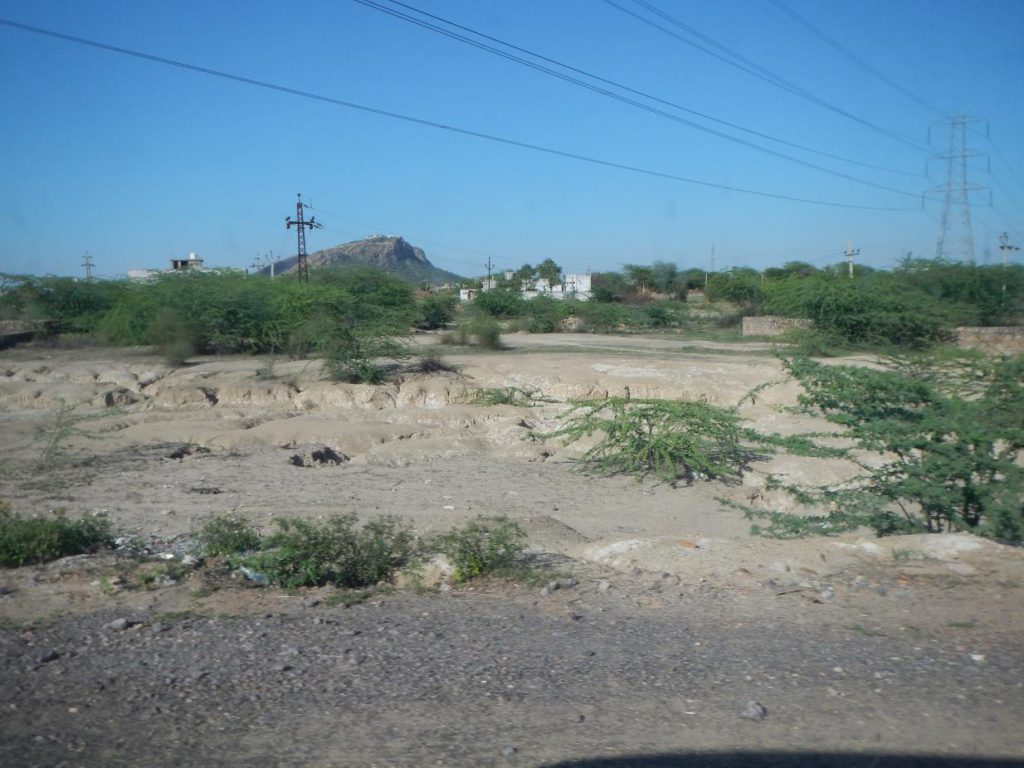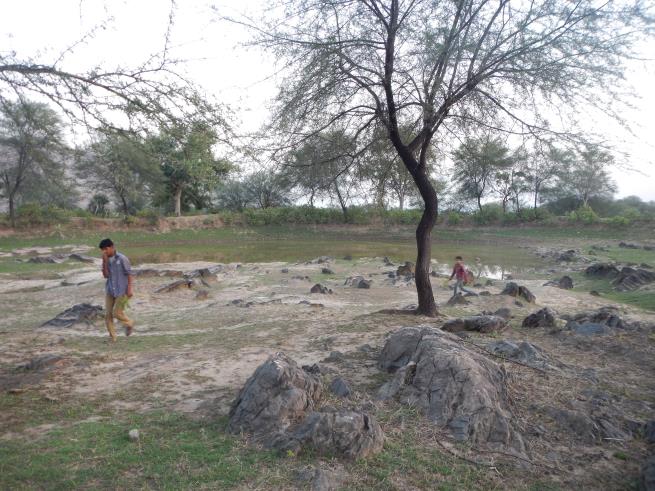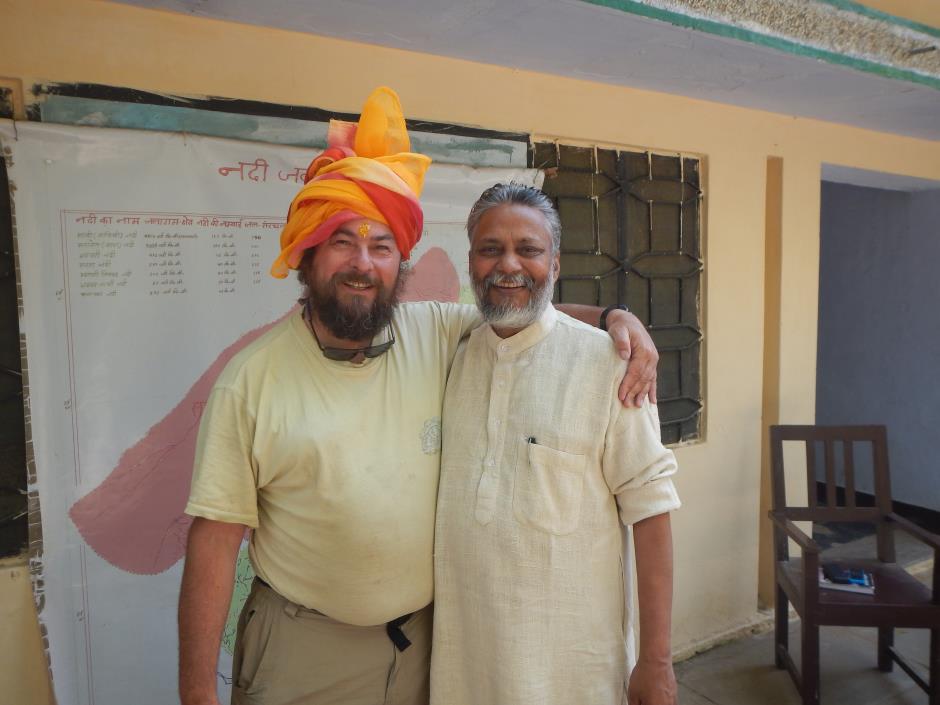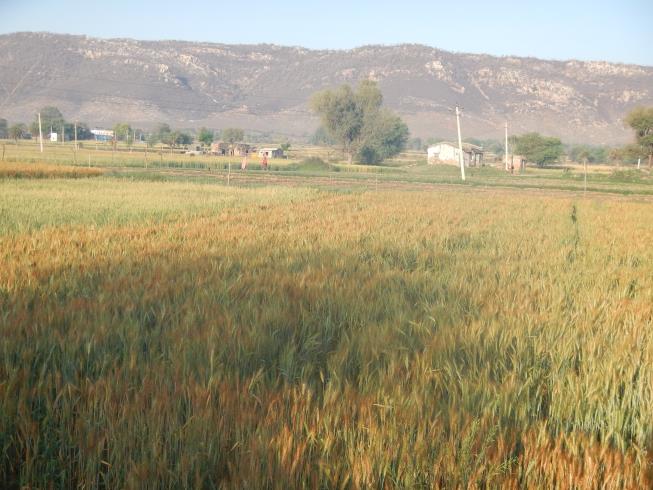
Sixty percent of the land area of the Indian state of Rajasthan is arid, the vast majority of the remaining 40% semi-arid. Occupying 10% of India’s land area, Rajasthan is also the nation’s largest state.
However, it holds just 1% of the nation’s surface water bodies, as high temperatures mean that surface waters are subject to substantial evapotranspiration rates in which 90% of annual rainfall occurs over a limited period (25-29 days) at a variable time during the monsoon months of July to September.
Nevertheless, Rajasthan encompasses a diversity of environments ranging from desert and semi-arid lands, mountains and hills, forest, wetland, cities and part of the Gangetic Plain. Rajasthan’s human population is substantially dependent on groundwater.
Rajasthan, and indeed India more generally, has a long tradition of localised water management techniques and community governance arrangements reflecting centuries-old adaptations to climatic conditions. Agriculture dominates human activities outside of cities, with a high reliance on groundwater.

local people
However, in common with many dryland zones in many developing countries, a history of state centralisation of ownership and management of water has led to dispossession from local people of this crucial resource. The resultant abandonment of locally suited water harvesting techniques and the social infrastructure essential to build, maintain and govern their use has led a to a spiral of decline of ecosystems and dependent human livelihoods. This situation is exacerbated by the mechanisation of groundwater pumping, privileging those with resources to pump ever-deeper and marginalising those without. As the groundwater retreated to more than one hundred metres deep, unsustainable farming and progressive desertification led to widespread abandonment of villages across Rajasthan, particularly by the young who favoured migration to urban centres to seek better material life prospects.

The NGO Tarun Bharat Sangh (TBS) was established in Bheekampura (Alwar district) in 1985 by Rajendra Singh against a backdrop of rural depopulation, and economic and ecological decline. The initial educational emphasis of TBS changed in 1985 when a village elder told Singh that the primary local issue was lack of water, not education. TBS took advice from a lower-caste older lady to restore or create small, localised water harvesting structures (WHSs) to recharge groundwater, as had been common before state centralisation of water management.
TBS initially set about building a small johad (a semi-circular bund to intercept monsoon run-off enabling it to percolate into groundwater) near Gopalpura village. The success of the Gopalpura johad in restoring groundwater levels as well as soil moisture and ecology conferred significant benefits for improved food production, rejuvenating local grazing and other vegetation, and re-establishing some vitality to the river. This generated growing interest in constructing WHSs from adjacent parched, depopulating villages. TBS activities expanded progressively in collaboration with local people as funds were attracted, significantly from international donors. As village-scale successes spread along catchments, perennial surface water reappeared – outside of the monsoon season – in rivers that had dried out forty years previously.

and social wellbeing
Innovation in the design of Johadi (the plural of johad), check dams and anicuts (low bunds across flatter drainage basins), always led by village demands and in concert with restoration of traditional village governance arrangements, has spread the benefits of community-based regeneration of groundwater, ecology and dependent livelihoods across increasing areas of north Rajasthan.
Catchment-scale parliaments compound the benefits. Singh’s views and approaches are now sought at national scale, and in March 2015 he was awarded the Stockholm Water Prize, sometimes nicknamed the ‘Nobel Prize for Water Management’.
A peer-reviewed paper documenting and analysing the successes of TBS, factors contributing to them and emerging transferrable lessons has been published:
- Everard, M. (2015). Community-based groundwater and ecosystem restoration in semi-arid north Rajasthan (1): socio-economic progress and lessons for groundwater-dependent areas. Ecosystem Services, 16, pp.125–135. http://dx.doi.org/10.1016/j.ecoser.2015.10.011.
